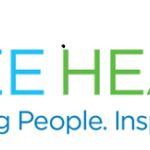 History of Traditional CDI Program Design
History of Traditional CDI Program DesignClinical Documentation Improvement (CDI) programs began in the late 1980s in response to the Federal Government’s implementation of Diagnosis-Related Groups (DRGs) in 1983. A host of consulting companies sold “DRG optimization” programs, now known as CDI programs, to hospitals which emphasized concurrent inpatient chart review by nurses to collaborate with physicians that added or clarified their documentation as to support a higher paying DRG. Consequently, current traditional CDI design at many facilities focuses primarily on the role of the concurrent reviewer (commonly referred to as a Clinical Documentation Specialist or CDS) and their concurrent record review and query process, while minimizing the importance and role of the inpatient coder and their retrospective review and query process. Many also fail to address other processes critical to a successful, sustainable CDI program, such as documentation infrastructure, coding compliance, and quality measurement.
Introduction
Traditional CDI programs focus on the concurrent review and query process, deemphasizing critical elements. CodeSmart™ Group’s (CSG) expanded traditional CDI programs to develop a more holistic approach to clinical documentation concept, recognizing the need to integrate concurrent reviews performed by Clinical Documentation Specialist with the retrospective roles performed by the coder, to develop prospective infrastructure supporting the entire process, and to assure that the final coded output can be reasonably defended upon retrospective scrutiny.
While the objectives for CDI programs may vary with each facility, most share a common vision and goal: an efficient, effective, and cooperative process that supports and sustains complete and precise provider documentation essential to the accurate and compliant assignment and sequencing of clinically congruent ICD-9-CM codes as well as the future ICD-10-CM/PCS codes.
CSG’s CDI teachings incorporates key components that collaboratively integrate the concurrent and retrospective review process work flows such that the needs of coding, quality, utilization review and compliance are met. The ultimate goal is accurate clinically congruent ICD-9 / ICD-10 code assignment that can be rigorously defended upon external agency review.
Traditional CDI Versus Holistic CDI
CSG’s Clinical Documentation program broadens the scope of CDI. With the holistic CDI teachings and process integration, the role of the inpatient coder is expanded to integrate the work of the CDS staff and concurrent documentation review activities with the retrospective coding process. A uniform query process is used for both the concurrent and retrospective documentation improvement process. In addition, a physician advisor supports the concurrent (CDS) and retrospective (Inpatient Coder) CDI team by encouraging their understanding of clinical definitions and indicators that support clinically appropriate queries and promoting CDI awareness among the medical staff. CDI systemizes diagnosis capture in documentation templates, especially applicable as electronic medical records are implemented. CSG’s documentation review process focuses the awareness of the CDS and coder not only on impact diagnoses capture, but also looking at each diagnosis as potential impact on quality indicators, severity of illness and denials. Our CDI clinically focused reference tool (Smart Code™) solution, allows the CDS, coder or provider to easily identify secondary diagnosis as a CC/MCC, HAC, HCC, PSI, IQI, SOI/ROM and potential denial as well as appropriate DRG, ICD-10-CM and ICD-10-PCS strategies. CSG’s clinically focused CDI software (CDI Smart™) solution, allows the CDS to easily organize and tract daily workflow activities in a single software solution.
Summary
CSG’s Clinical Documentation Program expands the scope of CDI. Traditional CDI is focused on the concurrent record review and generation process. With a holistic CDI program focus:
• The role of the inpatient coder is enhanced
• The coding process redesigned to integrate documentation improvement capture concepts and support integration with the concurrent review process
• A uniform query process is utilized for concurrent and retrospective documentation capture
• A Physician Advisor supports the team with definition of terms and support for systemic documentation capture
• CDS utilizes tools that allow them to be focused and efficient (i.e. CDI Smart™ software and Smart Code™ clinical reference tool)
Performance improvement metrics are comprehensive to assess key outcomes and process metrics important to the CDI Team.
The benefits of a CSG’s holistic CDI program include:
• Accurate reflection of patient severity of illness and risk of mortality
• Appropriate identification of secondary diagnosis that impact quality indicators
• Improved CDS and Inpatient Coder collaboration
• Improved workflow efficiencies
• Improved documentation capture
• Improved compliance efforts
• Improved physician satisfaction as retrospective queries are minimized
• Minimal impact on DNFB
• Minimal re-bills
• Sustainability
























